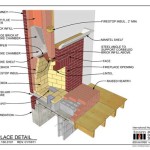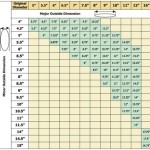Screened In Patio With Outdoor Fireplace: Extending Living Spaces Year-Round
The concept of outdoor living has evolved beyond simple patios and decks. Homeowners increasingly seek ways to seamlessly integrate indoor comfort with the allure of the outdoors. A screened-in patio with an outdoor fireplace represents a prime example of this trend, offering a sheltered, comfortable space that can be enjoyed throughout the year, regardless of weather conditions. This architectural addition provides a versatile area for relaxation, entertainment, and even dining, significantly enhancing the value and usability of a property.
The popularity of screened-in patios with fireplaces stems from a desire to maximize the use of outdoor spaces. Traditional patios are often rendered unusable during periods of inclement weather, such as rain, high winds, or excessive heat. Furthermore, pests like mosquitoes and flies can make spending time outdoors unpleasant. A screened enclosure mitigates these issues, creating a protected environment where occupants can comfortably enjoy the fresh air and natural surroundings. The addition of an outdoor fireplace further enhances the ambiance, providing warmth and a focal point for gatherings, extending the patio's usability well into the cooler months.
Designing and constructing a screened-in patio with an outdoor fireplace requires careful planning and consideration of various factors, including local building codes, site conditions, material selection, and aesthetic preferences. The integration of these elements is crucial for creating a functional and visually appealing space that complements the existing architecture of the home. A well-designed enclosure will not only provide practical benefits but also enhance the overall curb appeal and value of the property.
Key Point 1: Design Considerations for Screened-In Patios
The design phase is paramount to the success of any screened-in patio project. This stage involves evaluating the existing structure, determining the desired size and layout of the enclosure, and selecting appropriate materials. The existing patio’s dimensions and orientation often dictate the feasible size and shape of the screened-in area. Considerations should be given to traffic flow, furniture placement, and the location of the fireplace. For example, sufficient space is needed around the fireplace to ensure safety and allow for comfortable seating arrangements.
Roofing options for a screened-in patio can range from simple screens to solid roofs. A screen roof provides maximum ventilation but offers minimal protection from rain or sun. A solid roof, on the other hand, offers greater weather protection and can be integrated with the existing house roof for a seamless appearance. The choice of roofing material should complement the architectural style of the home and provide adequate insulation to regulate temperature within the enclosure.
Screening materials are available in various options, including aluminum, fiberglass, and vinyl-coated polyester. Aluminum screens are durable and resistant to corrosion, but they can be more expensive than other options. Fiberglass screens are a more affordable alternative, but they may not be as durable as aluminum. Vinyl-coated polyester screens offer a good balance of durability and affordability. The selection of screening material should consider factors such as visibility, insect resistance, and expected lifespan.
The placement of doors and windows within the screened-in patio is also critical. Doors should be strategically located to provide easy access to the backyard, garden, or other outdoor areas. Windows can be incorporated to enhance natural light and ventilation. The size and style of doors and windows should complement the overall design of the enclosure and provide a comfortable and functional space.
Key Point 2: Selecting and Integrating an Outdoor Fireplace
The outdoor fireplace serves as a focal point within the screened-in patio, providing warmth, ambiance, and a gathering place for family and friends. The selection of a suitable fireplace involves considering factors such as fuel type, size, style, and placement. Fireplaces can be fueled by wood, gas, or propane. Wood-burning fireplaces offer a traditional aesthetic and the satisfying crackle and aroma of burning wood. Gas fireplaces are more convenient and require less maintenance, providing instant heat with the flick of a switch. Propane fireplaces offer similar convenience and portability, making them suitable for areas where a gas line is not readily available.
The size of the fireplace should be proportionate to the size of the screened-in patio. A fireplace that is too large can overwhelm the space and generate excessive heat, while a fireplace that is too small may not provide adequate warmth. The style of the fireplace should complement the architectural style of the home and the overall design of the enclosure. Options range from traditional brick fireplaces to modern stone or metal designs.
The placement of the fireplace within the screened-in patio requires careful consideration of safety and ventilation. The fireplace should be located away from flammable materials, such as furniture, curtains, or screens. Adequate ventilation is essential to prevent the buildup of smoke and carbon monoxide. Local building codes may require specific clearances and ventilation requirements for outdoor fireplaces.
Integrating the fireplace into the design of the screened-in patio can enhance its aesthetic appeal. This can be achieved by using complementary materials, such as stone or brick, to create a cohesive look. Incorporating features such as mantels, hearths, and decorative accents can further enhance the visual appeal of the fireplace. Custom-built fireplaces offer the opportunity to create a unique and personalized design that reflects the homeowner's individual style.
Key Point 3: Material Selection and Construction Techniques
The choice of materials used in the construction of a screened-in patio with an outdoor fireplace significantly impacts its durability, aesthetics, and overall cost. Common materials include wood, composite decking, aluminum, and various types of screening. Each material possesses distinct advantages and disadvantages that should be carefully considered during the selection process.
Wood is a traditional and versatile building material that offers a natural and aesthetically pleasing appearance. However, wood is susceptible to rot, insect damage, and weathering, requiring regular maintenance to preserve its integrity. Pressure-treated lumber is commonly used for framing and structural components to enhance its resistance to decay. Composite decking offers a low-maintenance alternative to wood, providing a durable and weather-resistant surface for the patio floor. Composite decking is available in a variety of colors and textures, mimicking the appearance of natural wood without the need for painting or staining.
Aluminum is a lightweight and durable material that is commonly used for framing and screening. Aluminum is resistant to corrosion and requires minimal maintenance, making it an ideal choice for outdoor applications. Screening materials are available in various options, including aluminum, fiberglass, and vinyl-coated polyester. The selection of screening material should consider factors such as visibility, insect resistance, and expected lifespan.
Construction techniques play a crucial role in ensuring the structural integrity and longevity of the screened-in patio. Proper foundations are essential to prevent settling and ensure the stability of the structure. Framing techniques should adhere to local building codes and best practices to provide adequate support for the roof and walls. Screening should be securely attached to the framing to prevent sagging or tearing. The installation of the fireplace should be performed by a qualified professional to ensure proper venting and safety.
Furthermore, integrating electrical wiring for lighting, fans, and other appliances requires careful planning and execution. Electrical work should be performed by a licensed electrician to ensure compliance with safety codes. Proper grounding and weatherproofing are essential to prevent electrical hazards. The selection of lighting fixtures should consider the desired ambiance and functionality of the screened-in patio. Options range from ambient lighting to task lighting, providing flexibility for various activities.
Finally, proper drainage is crucial to prevent water damage and extend the lifespan of the screened-in patio. The patio surface should be sloped slightly to allow water to drain away from the house. Gutters and downspouts can be installed to collect rainwater and direct it away from the structure. Adequate drainage will help prevent the buildup of moisture and protect the patio from rot, mold, and other forms of water damage.
In conclusion, creating a screened-in patio with an outdoor fireplace is a complex project requiring thorough planning and execution. By carefully considering design elements, fireplace selection, material choices, and construction techniques, homeowners can create a valuable addition to their property that enhances their enjoyment of the outdoors year-round.

I D Love A Porch Like This Design House With Fireplace

Pin De Archadeck Of Central Ga En Screened Porches Open

Screen Porch With Fireplace Patio Fire Pit Rustic Chicago By Archadeck Of Chicagoland Houzz

Screened Porch With Fireplace Design Ideas

Screened Porch With Fireplace Design Ideas

Elevated Screened Porch And Patio With Outdoor Fireplace In Sykesville Md Rustic Veranda Baltimore By Design Builders Inc Houzz
.jpg?strip=all)
Official Blog Of Design Builders Inc The Dmv S Premier Licensed Bonded And Insured Local Deck Builder Outdoor Fireplaces

Outdoor Fireplace Ideas Inspiration Dutchies Stoneworks

Outdoor Fireplace Ideas Inspiration Dutchies Stoneworks

House With Porch Design Screened Designs
Related Posts








